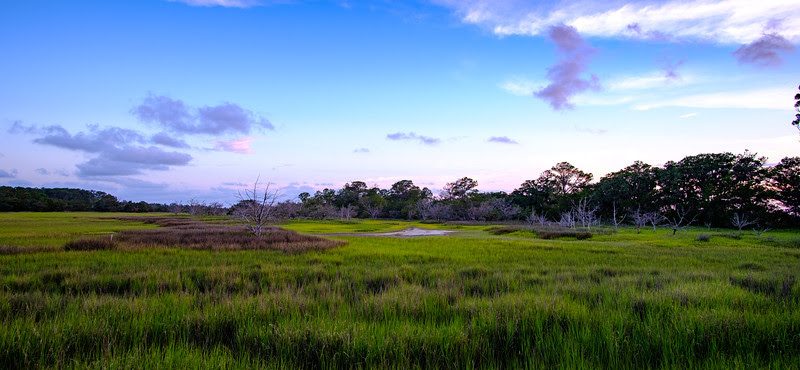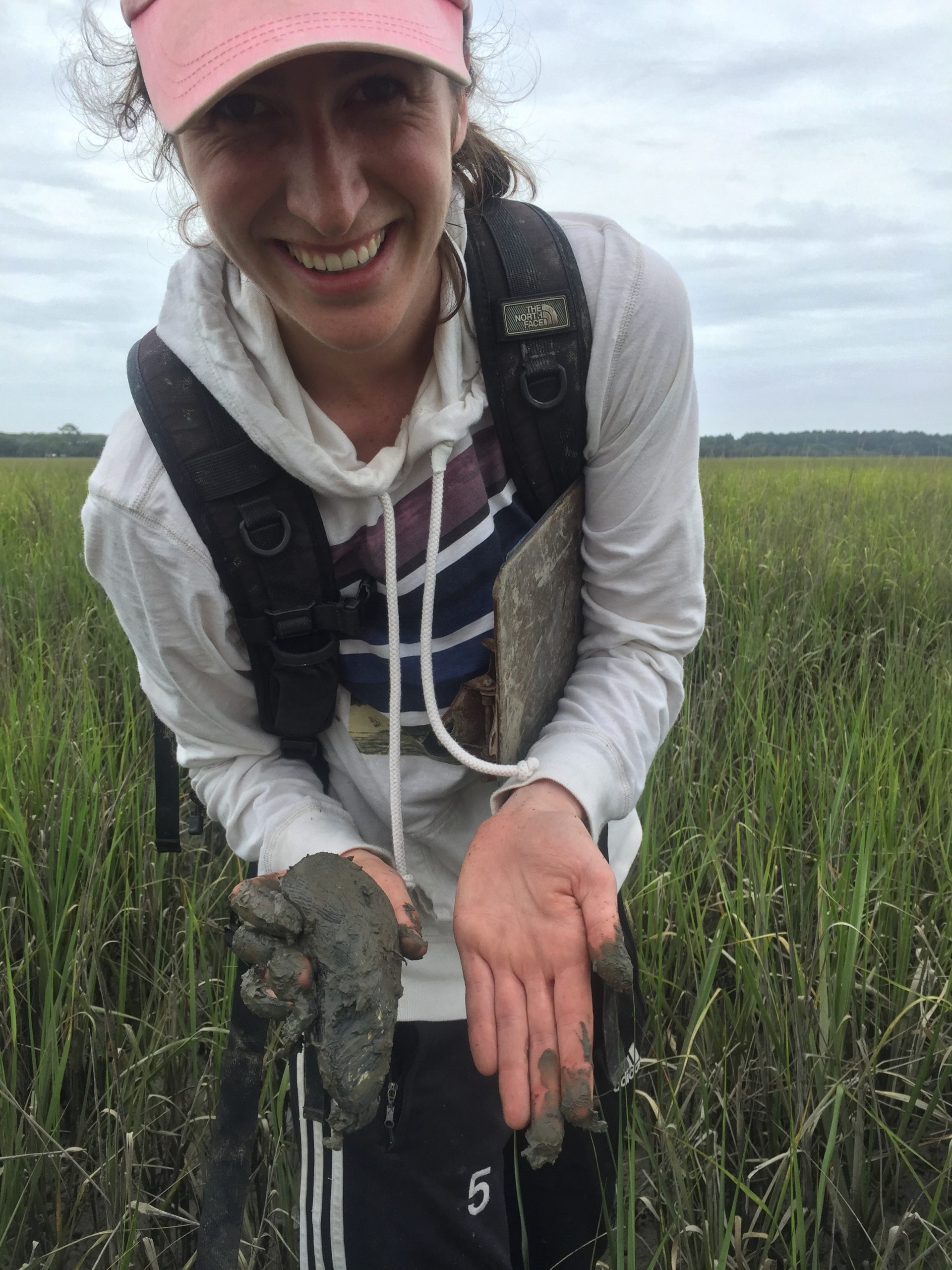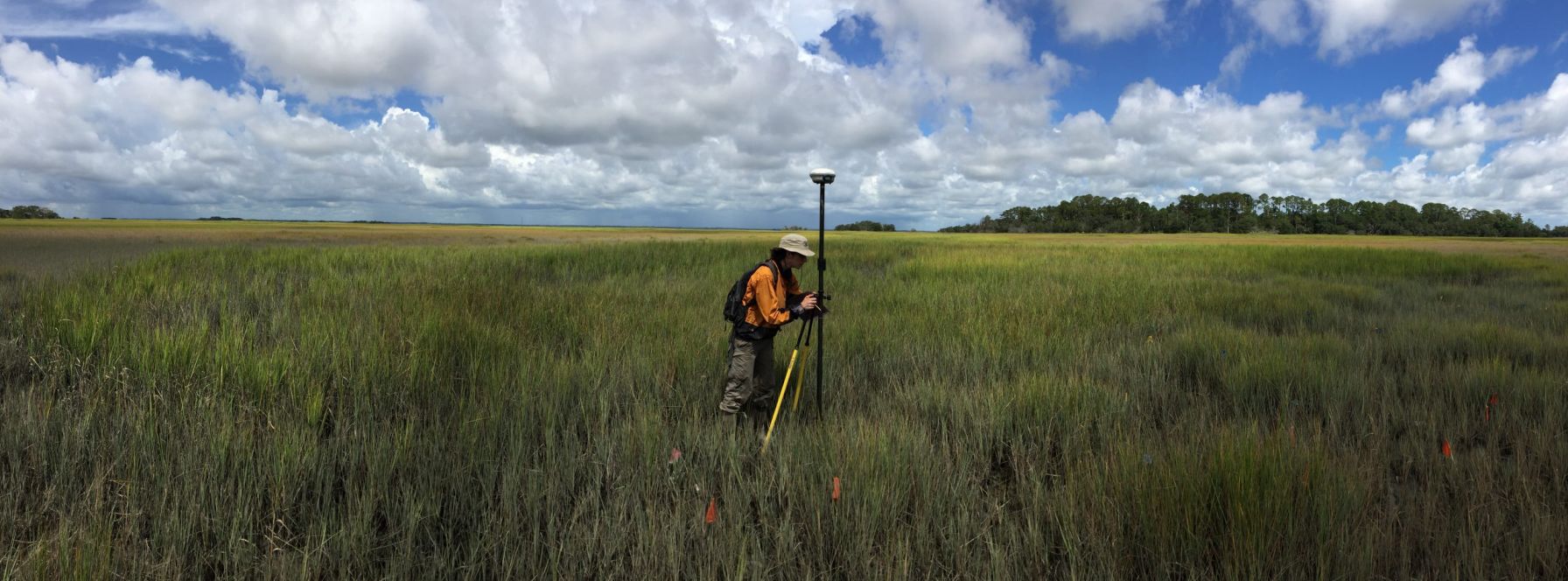
A study examining the effects of mussels on salt marshes showed that animals may have a much greater role than previously expected in helping these vital coastal ecosystems adapt to climate change.
“As sea levels rise, some marsh habitats are at risk of drowning. Our goal was to understand how the ecological community living within the marsh can help these valuable ecosystems persist,” said lead author Sinéad M. Crotty, associate director of science of the Carbon Containment Lab at Yale University, who led the research project while completing her doctoral studies in Environmental Engineering Sciences at UF.

Marshes are among the most biologically diverse and productive habitats in the world and play a critical role in the fight against climate change, storing vast amounts of carbon, and protect against flooding and shoreline erosion from storms, hurricanes and other extreme weather events. Their capacity to provide these services depends on their ability to build elevation and stay above the tide—through a process called accretion.
By combining observational, experimental and modelling work, researchers at the University of Florida (UF) and the Royal Netherlands Institute for Sea Research were able to demonstrate that ecosystem engineering by mussels in Southeastern US salt marshes is a much stronger driver of accretion rates than expected.
“The present study provides new insight into the mechanisms by which coastal ecosystems that are highly valuable for flood defense, such as salt marshes, can cope with sea-level rise,” said co-author Tjeerd J. Bouma, Ph.D., senior scientist at the Royal Netherlands Institute for Sea Research.
To see whether mussels contribute to marsh accretion at smaller scales, Crotty and UF doctoral students Hallie Fischman and Sydney Williams set up several experiments on Sapelo Island, Georgia. Results from these experiments were used by UF doctoral student Daniele Pinton and UF Assistant Professor Alberto Canestrelli, Ph.D., to build a model, called Delft-3D-BIVALVES, which they applied to simulate the role of mussels and marsh plants in promoting marsh elevation gain at larger landscape scales.
The field team then undertook a large-scale mussel removal and addition experiment, which involved removing more than 200,000 Atlantic ribbed mussels, Geukensia demissa, by hand and moving them to a new location. Collin Ortals, Ph.D., geospatial data engineer with the UF Center for Coastal Solutions, created a digital elevation model to evaluate how the presence of mussels affected marsh elevation.

“We found that, in reality, the effects of mussels on marshes are far greater than predicted by the models, and occur at large, landscape scales,” said Crotty.
Salt marshes, which stretch across more than one million acres of the southeastern US Atlantic coast, are vital to the cultural identity, economic security and health of the millions of residents that live along the coast in this region.
“These wetlands sustain valuable recreational and commercial fisheries, such as blue crabs, oysters and shrimp, and improve water quality by filtering nutrients, metals and other contaminants,” said Christine Angelini, Ph.D., UF associate professor and project lead.
A better understanding of these complex ecosystems informs future salt marsh restoration efforts. These findings suggest that initiatives to protect and restore coastal areas, specifically efforts to support these systems in adapting to climate change, should consider a range of animals as well as plants, which have been the focus of attention in restoration efforts to date.
“In the case of salt marshes, mussels may be the key ‘difference maker,’ Crotty said.
Going forward, models of marsh accretion should also incorporate the direct and indirect effects of animals.
“While this project only considered their direct effects, mussels have many indirect effects on associated fauna like crabs and snails, and flora, such as cordgrass, that are found in the marsh,” said Pinton, who led the numerical modeling work. “Future work should aim to quantify how the direct and indirect effects of these mussels influence the scale of their effects.”
Exploring the effects of animal ecosystem engineers in other coastal systems is another area for future research.
“There is an exciting opportunity ahead to explore whether animals that influence plant growth or sediment movement, from grazing cows and sheep to burrowing crabs and worms, are affecting the persistence of other coastal systems as sea level rises,” added Canestrelli.
Related:
Yale study investigates ecological impact of mussels on coastal marshlands
Article from Powering the New Engineer, News from Herbert Wertheim College of Engineering
This article, “Faunal engineering stimulates landscape-scale accretion in southeastern US salt marshes,” by Sinéad M. Crotty, Daniele Pinton, Alberto Canestrelli, Hallie S. Fischman, Collin Ortals, Nicholas R. Dahl, Sydney Williams, Tjeerd J. Bouma and Christine Angelini and published in Nature Communications, is free to access and can be read here.
The Center for Coastal Solutions, Herbert Wertheim College of Engineering, University of Florida, advances and accelerates science and technology solutions for cleaner waters, sustainable environments and resilient communities.
—
By Sharon Ryan
